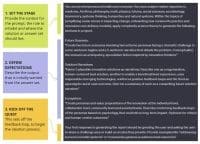Benjamin Franklin once said: “nothing is certain except death and taxes.”
If he were alive today, he would probably add: “… and going to meetings (or being forced to attend one).” A quick internet search reported that in pre-pandemic times in the United States, around 55 million meetings were held each week, approximately 11 million per day. However, according to the New York Times, the number of daily Zoom participants increased from 10 million in December 2019 to 300 million in April 2020. We can only imagine what it is now. The pandemic made Zoombies of all of us, a testament to living the new normal. Meetings are a daily reality for most professions. The average employee spends 4 hours a week preparing for status update meetings. No wonder there is a general consensus that most meetings are a waste of time (we’ll circle back on that in the next meeting). There is evidence that too many meetings negatively impact productivity, and online meetings lead to Zoom fatigue and technostress. One study showed that when meetings were reduced by 40%, productivity increased by 71%.
Why meeting?
In 1976, Anthony Jay, a former BBC producer and executive, wrote a 9,000-word treatise entitled How to Run a Meeting in the Harvard Business Review. Jay explained the six main functions of meetings:
- Define the group and reinforce a sense of belonging and collective identity.
- Enhance the “social mind”—the capacity to share knowledge and experience. A group of people brainstorming frequently produce better ideas and decisions.
- Help individual members understand the collective aim of the group.
- Create in all present a commitment to the decisions the group makes.
- Provide an occasion where the team or group actually works together and a time when the supervisor, manager, or executive is actually perceived as the leader of the team, rather than as the official to whom employees report.
- Provide an arena to validate the status of the members of a group.
I would add to the above list that meetings are opportunities to encourage the heart—to give a public shoutout to colleagues who exceeded expectations or did the laudable.
Jay warns that there’s no guarantee a meeting can accomplish all or any of its functions. He said, “It is all too possible that any single meeting may be a waste of time, an irritant, or a barrier to the achievement of the organization’s objectives.” Along with having a clear agenda, experts suggest that, in general, meetings should be less than 30 minutes, with no more than five to eight attendees (a committee) to allow for balanced air time for participants. Many staff attend an assembly of 50 or more people where the participants’ most important contribution is simply logging in and tuning out. I read somewhere that “the oddity of electronic connectivity while being fully disengaged is utterly beguiling.” I couldn’t agree more.
When we meet again
My aim in writing this essay is practical. I’ve been to countless meetings in my academic career, and I vaguely suspect that a few of them have shortened my life expectancy by a few days. Sitting through Zoom or in-person meetings among people with irritating meeting behaviors sets my adrenal glands into overdrive. I can feel my arteries sclerosing. So my personal preamble in attending meetings is this:
Imploring common sense and human decency, I shall embody respectful behavior and promote the common good, achieve mutual goals, and use all resources available to me not to waste people’s time and be a nuisance.
Answering emails, shopping, cooking and eating, folding laundry, daydreaming, or sleeping—these are just a few examples of what meeting-goers do while in an online meeting. One study showed that 92% of attendees multitask, which, ironically, leads to unproductivity, primarily from lack of engagement. I have yet to see “community agreement” made explicit in meetings I have attended. I think there is value in having the group agree on proper meeting decorum. Everyone knows what is appropriate behavior during meetings, but rarely call someone out for unacceptable actions (irritating small children Zoom bombing the meeting).
From attending so many meetings, I have not just made a discovery, but a realization to invoke the golden rule: to behave in meetings the way I want others to behave. It is much easier to change oneself than expect others to change. Here are a few personal goals I aim to achieve (God help me):
- In every online meeting I attend, I will enable my video and disconnect from the day-to-day (online shopping can wait).
- Should the old normal of in-person meetings become the new normal again, I won’t use my laptop or my cell phone for unrelated work during meetings.
- I shall refrain from speechifying or from unnecessary theorizing. I shall only talk when what I am about to say adds value and will do so for less than 1 minute.
- I will not cut anyone off while they are still talking, because it is simply
- I will refrain from repeating what was just said by another. It is an utter waste of time.
Call me old fashioned, but I prefer in-person meetings. Zoom may hide attendees’ headshakes of disdain when someone is making a fool of themselves, but the greater loss is missing the authentic nods of solidarity and the animating “presence” of people we care about when we gather in person. I pray that all the powers that be will plan better meetings that start and end on time. And yes, I’ll have the pizza too, but no soda please, I’m weight-watching while watching the Zoom room.
Reference
Weaver C. Meetings. Why? Does this conversation need to be a meeting? Does anything? The New York Times. June 24, 2021. nytimes.com/2021/06/24/business/work-meetings-zoom.html
Fidelindo Lim is a clinical associate professor at New York University – Rory Meyers College of Nursing.


















